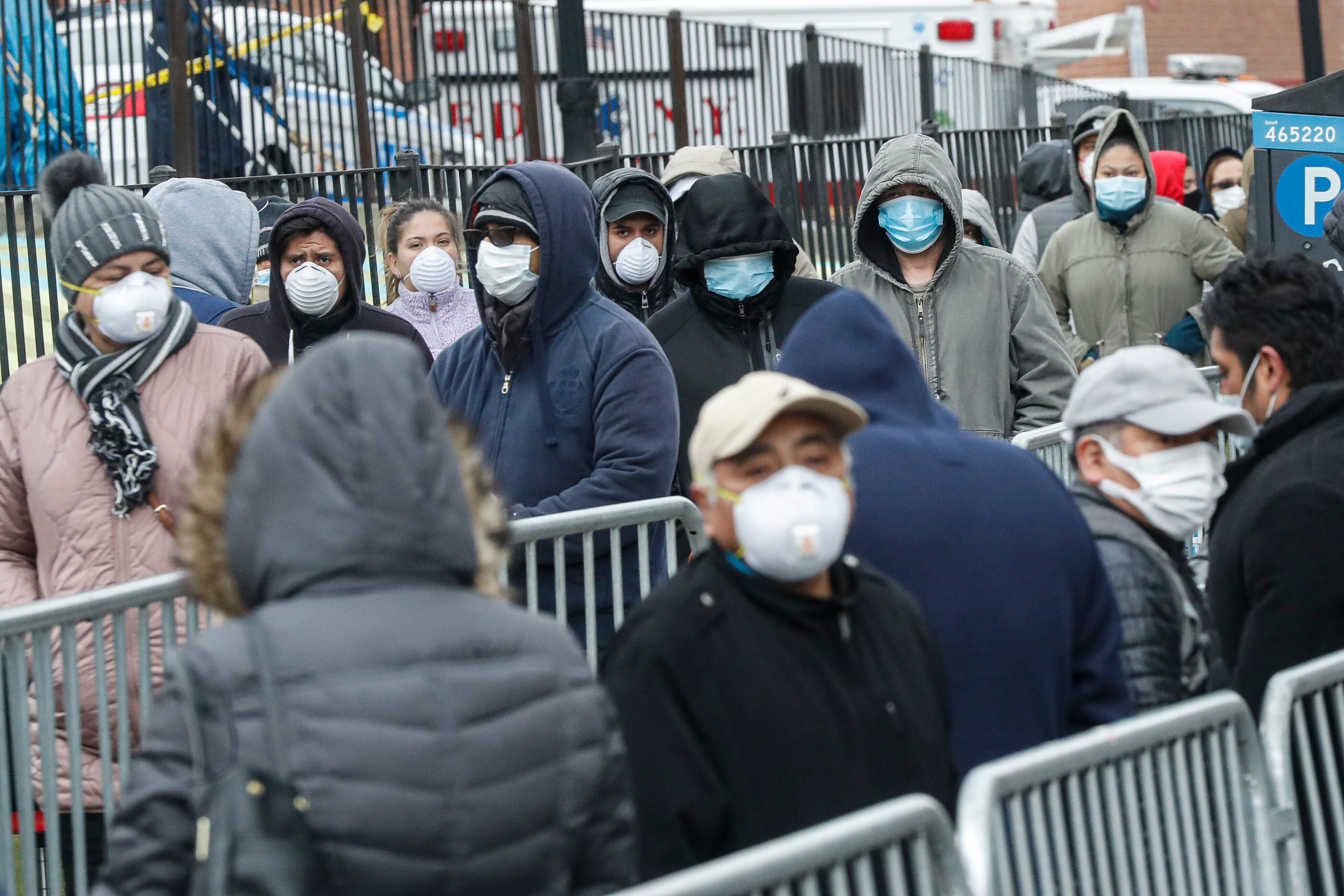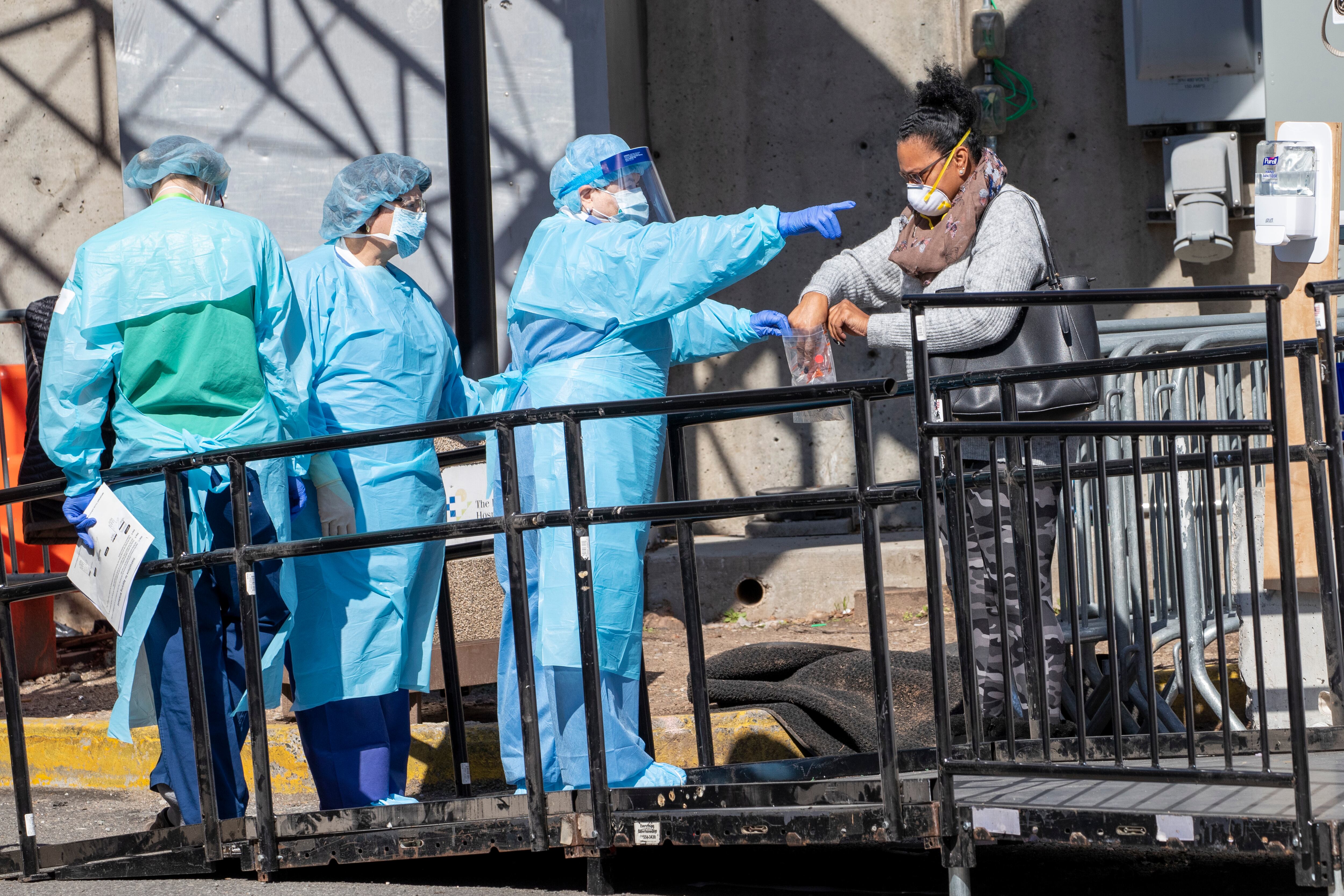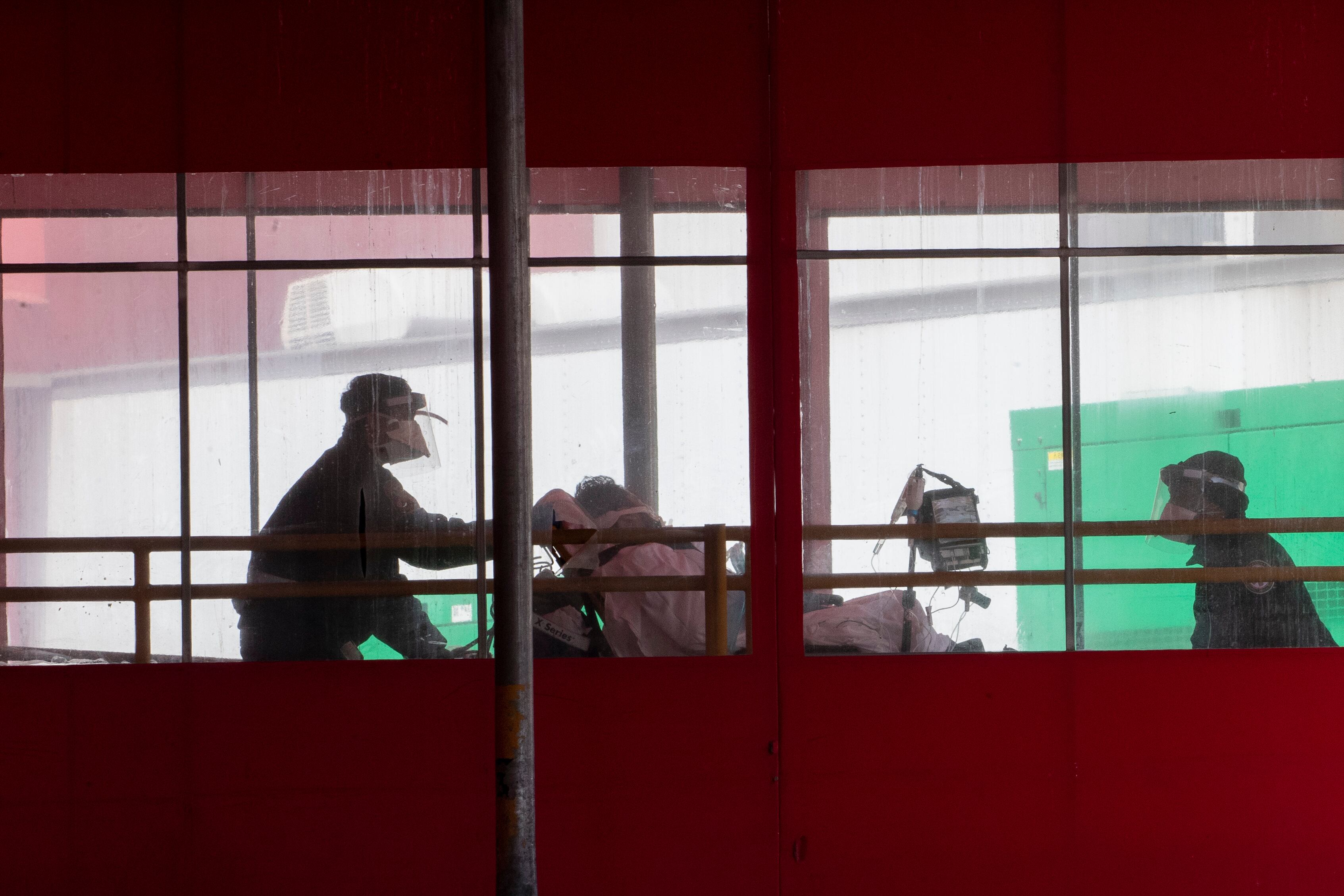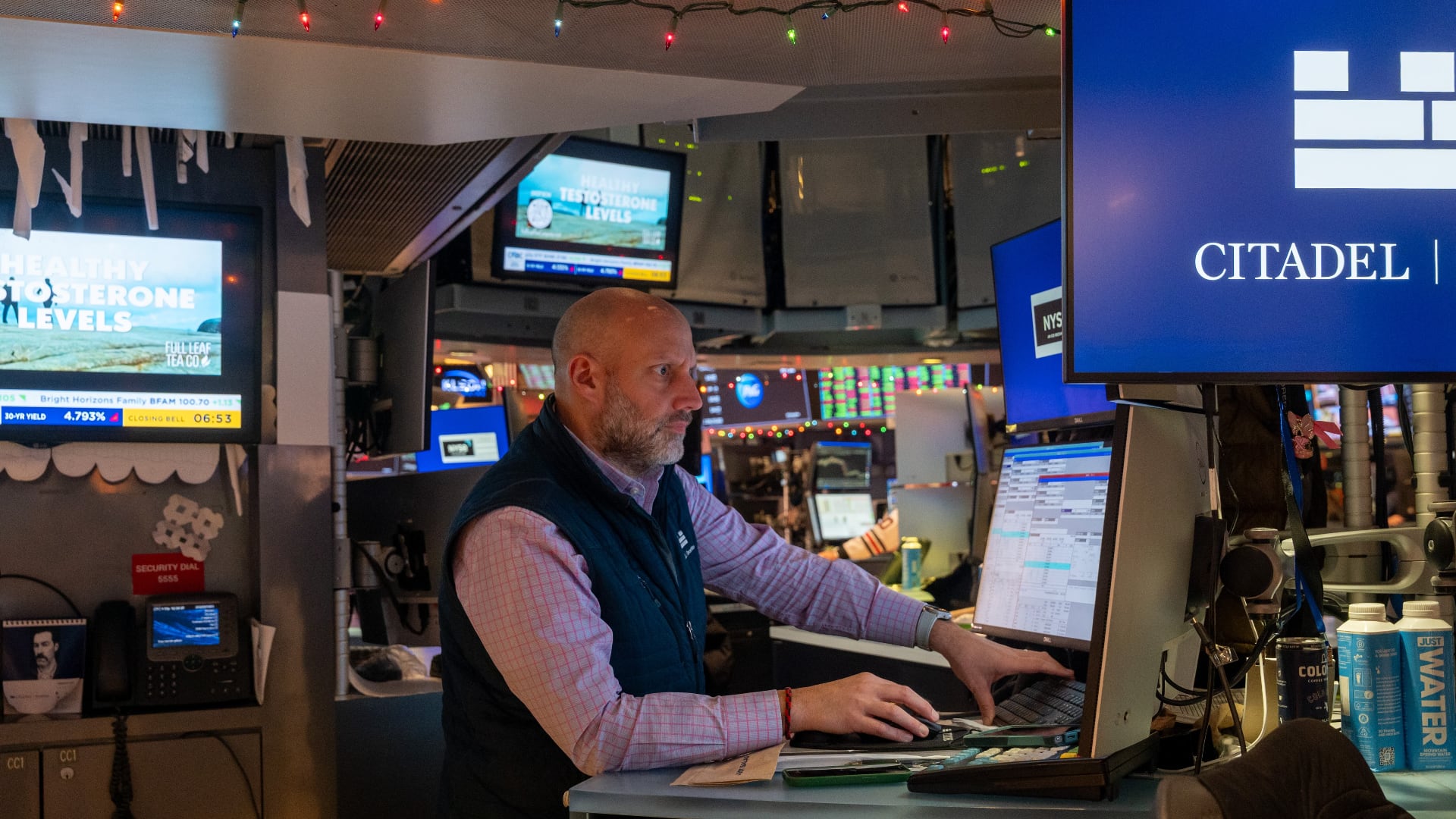With the number of coronavirus patients exploding in hotspots like New York and hospitals facing a critical shortage of life-saving equipment, health care providers may soon be facing an excruciating choice: Who gets to live. And who doesn’t.
That once unimaginable dilemma is getting much closer to becoming a reality in hospitals across the U.S. as coronavirus cases continue to surge faster than doctors can obtain the life-saving equipment needed to treat them.
“The number of cases is skyrocketing every day,” said Dr. Robert Klitzman, professor and director of the Master of Bioethics program at Columbia University. A lot of hospitals I know have not yet had to triage ventilators, but I anticipate that in the next day, two days, three days -- certainly in the next week, they will.”
New York Gov. Andrew Cuomo put form to Dr. Klitzman’s warning during his Thursday press conference, cautioning the state is likely to run out of lifesaving ventilators in six days.
"At the current burn rate, we have about six days of ventilators in our stockpile," Cuomo said at a press conference.

New York, which has quickly become the U.S. epicenter of the coronavirus outbreak, has reported more than 113,700 infections and more than 3,500 deaths. At a briefing on Saturday, Governor Cuomo warned that the peak of infections in New York State could come within four to eight days. And the state isn’t ready.
“We’re not yet ready for the apex,” he said. “We’re not yet ready for the high point, we’re still working on the capacity of the system, the more time we have to improve the capacity of the system, the better,”
The crisis is most acute in New York City, where hospitals are running low on ventilators, ICU beds and medical staff at a time when patients will need them most. And experts say it’s not a matter of if authorities and health care professionals will have to decide which COVID-19 patients get a life- saving machine and which receive palliative care instead, but when.
TRIAGE: ‘WE ARE IN THE BATTLEFIELD’
The practice of prioritizing whom to treat is known as triage. The term was first used in World War I when medics were forced to apply limited resources to the soldiers who were more likely to survive.
“Principles of triage are that you help people who would die if you didn't help them, and will live if you do help them,” Dr. Klitzman said. “People who don't get priority are people who even if you help them, they’re not going to survive.”
Doctors in countries devastated by coronavirus outbreaks have been forced to start instituting these practices -- to devastating effect.
Reports out of Italy describe doctors and staff breaking down in the hallways of overwhelmed hospitals when faced with the prospect of making life-and-death decisions about who can receive care. Those sorts of decisions may soon be made in New York, or Detroit, or New Orleans, or another hot spot that’s yet to emerge..
“We are in the battlefield, Dr. Klitzman said. “Doctors are now working in the trenches. They are overwhelmed. They are now seeing many many COVID patients and do not have the resources fully to treat them. Or if they have the resources today, in a few days they won’t.”
“We have doctors and nurses crying here, too, I’ve never seen anything like it,” he added.
The Italian College of Anesthesia, Analgesia, Resuscitation and Intensive Care did ultimately publish official guidelines medical staff should follow when allocating scarce resources, but Alan Regenberg, associate faculty at Johns Hopkins Berman Institute of Bioethics, said it came too late.
In order to save the most lives, manage the emotional health of doctors and the public, and minimize legal liability on medical staff, Regenberg recommended health care professionals work together with federal and state authorities to design official guidance on how to ethically distribute care and resources when supplies are limited. Ideally, these guidelines should be clear, transparent and take into account the will of the public, as Regenberg himself did when assisting in an effort led by Johns Hopkins to craft pandemic preparedness guidelines in Maryland. The group, which described their work in a Washington Post op-ed, worked closely with the public to hone their recommendations.

Doctors and nurses should never be charged with making decisions about who to save in the moment, Regenberg said. The ultimate call should instead fall to a preordained triage officer or committee at a given health care facility.
“It should not be front-line health care providers because this runs against the grain of everything they do. It would be putting such an immense burden onto them. The moral distress that would result from asking somebody who is taking care of a patient to make a decision about not providing care to that patient is just hard to imagine,” Regenberg said.
Medical professionals and ethicists in partnership with state leaders are working to submit a final preparedness plan to Maryland Gov. Larry Hogan, The Baltimore Sun reported.
Planning of this sort requires forethought. Despite Governor Cuomo’s insistence that “there’s no protocol” for triage, most states including New York already have ethical guidelines recommended for use during a pandemic. Work on Maryland’s program, for example, kicked off after H1N1, or swine flu, killed as many as 575,000 people worldwide. The pandemic killed fewer people than feared, but experts have since called it a “warning sign” of crises to come that authorities failed to heed. Work on New York’s “Ventilator Allocation Guidelines,” began even prior to the swine flu outbreak.
WHO GETS TO LIVE?
A range of factors go into determining who ought to be prioritized for life-saving care. Guidelines in New York and Maryland rely at least in part on the Sequential Organ Failure Assessment (SOFA), which measures organ and body system functionality.
Low SOFA scores are assigned to patients with the highest likelihood of survival and recovery. Those patients are prioritized for life-saving care and scarce equipment. Patients with the highest scores, indicating a low likelihood of survival even with intervention, would fall to the back of the line when beds, doctors, and ventilators are scarce. The team that worked on crafting Maryland’s guidelines then recommended considering other serious health problems that might impact the chance of survival for one year after care, followed by using life stage. In the event that the assessment of two patients is even, New York officials recommend a random lottery system.
Regenberg cautioned, though, that considerations like age, other health problems, and the likelihood of longer-term survival after medical intervention can open the door to ethical conflicts and discrimination.
Diabetes, for example, is a disease that disproportionately impacts lower-income individuals, and reduces life expectancy. It also increases the likelihood of severe illness and death from COVID-19. If conditions like diabetes and the limits on longevity they impose are factored into triage decisions, those with better overall health, and likely the more financially stable, will be prioritized.

“People who have the least resources are the most likely to have life-limiting medical comorbidities for a whole host of reasons that aren’t always their fault, and largely aren’t their fault,” Regenberg said. “The places they live, the food that’s available, the options they have in life are constrained in a way that increase the likelihood that people have things like heart disease and diabetes."
Similarly, disability advocates have flagged preparedness plans in Washington state and Alabama for discriminating against the intellectually disabled, according to a ProPublica report. Alabama’s guidelines specifically list people with “severe or profound” intellectual disabilities and moderate to severe dementia as “poor candidates” for ventilator support. Advocates also worry that the vagueness of plans from states like Arizona leave too much room for interpretation and potential discrimination against the disabled.
THE POLITICS OF RATIONING CARE
The need to ration care can be a difficult pill to swallow. Indeed Governor Cuomo and the state Department of Health have not embraced New York’s ventilator rationing plan, despite the urging from doctors to shield them from liability. The New York chapter of the American College of Physicians wrote Cuomo a letter requesting that he legally protect doctors if they are forced to withhold care from certain patients, The New York Times reported.
Leaders in the U.K. face a similar quandary. Prime Minister Boris Johnson has resisted disclosing the specific guidelines doctors should use to prioritize who receives care, for fear of public backlash. It’s unusual, considering the U.K. government has long embraced prioritizing care for stronger individuals with a better chance of survival in the case of a pandemic, according to The New York Times.
Whether in the U.S. or abroad, these plans are only a last resort once all other attempts at acquiring necessary equipment, care and medical assistance have failed. But given limited national supply in the U.S. and the politics of allocation, which have precipitated a bidding war among states and federal agencies like FEMA, experts anticipate that these guidelines will soon come into play.
“I think it will be a tragedy if we end up rationing care in one state when we have resources available in another state,” Regenberg said. “We need to think about dealing with this at that national level. Frankly, it wouldn’t be a bad idea to think about the resources more globally, but I am a little skeptical about the ability of the current federal leadership and any kind of global leadership to be hugely successful in leading those efforts.”



